BetterVest - Kickstarting the global energy transition
About Pitch Hub Innovate4Climate 2018:
The Pitch Hub provided a dynamic space to "pitch" to potential investors and seek feedback from leaders in climate investment, finance, and markets.
BetterVest - Kickstarting the global energy transition
About Pitch Hub Innovate4Climate 2018:
The Pitch Hub provided a dynamic space to "pitch" to potential investors and seek feedback from leaders in climate investment, finance, and markets.
A comprehensive annual overview of the state of renewable energy.
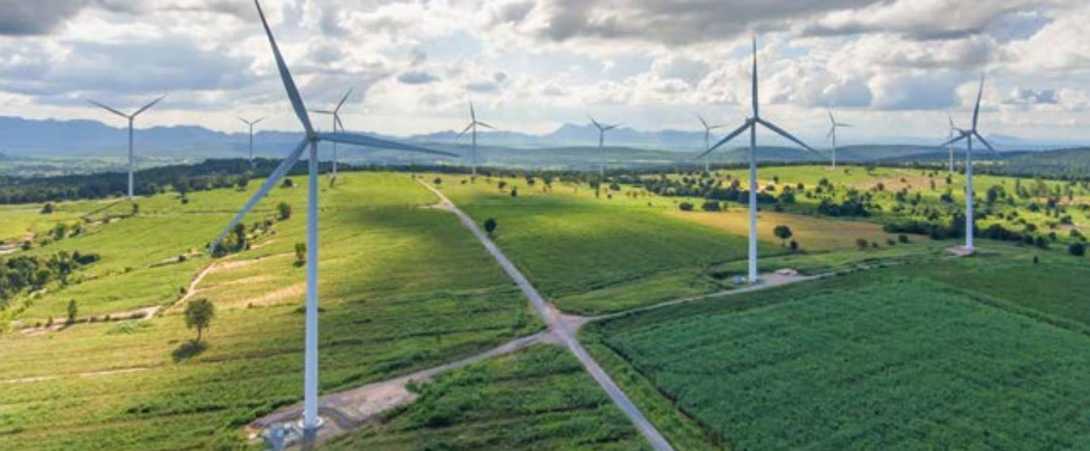
Renewable power accounted for 70% of net additions to global power generating capacity in 2017, the largest increase in renewable power capacity in modern history, according to REN21’s Renewables 2018 Global Status Report (GSR). But the heating, cooling and transport sectors – which together account for about four-fifths of global final energy demand – continue to lag far behind the power sector. The GSR, published today, is the most comprehensive annual overview of the state of renewable energy worldwide.
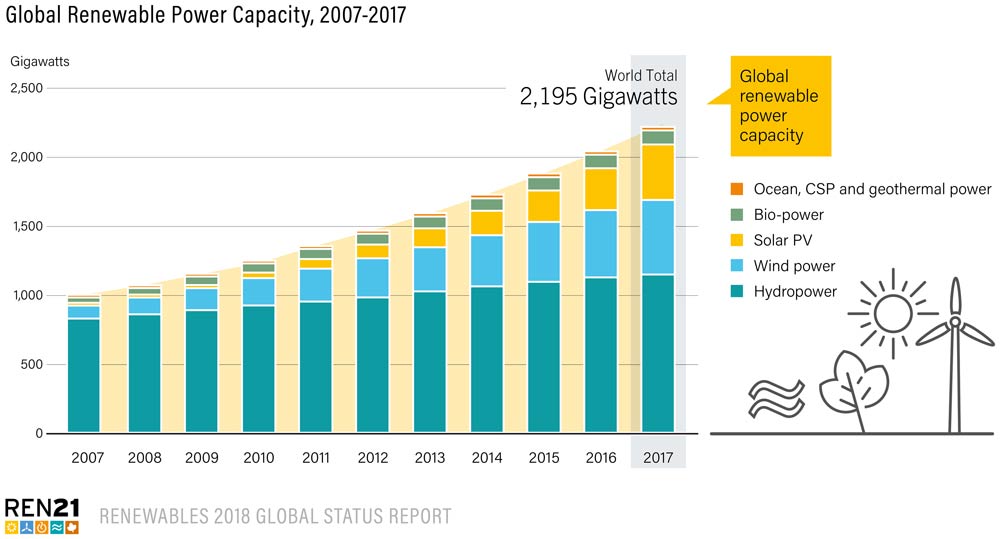
New solar photovoltaic (PV) capacity reached record levels: Solar PV additions were up 29% relative to 2016, to 98 GW. More solar PV generating capacity was added to the electricity system than net capacity additions of coal, natural gas and nuclear power combined. Wind power also drove the uptake of renewables with 52 GW added globally.
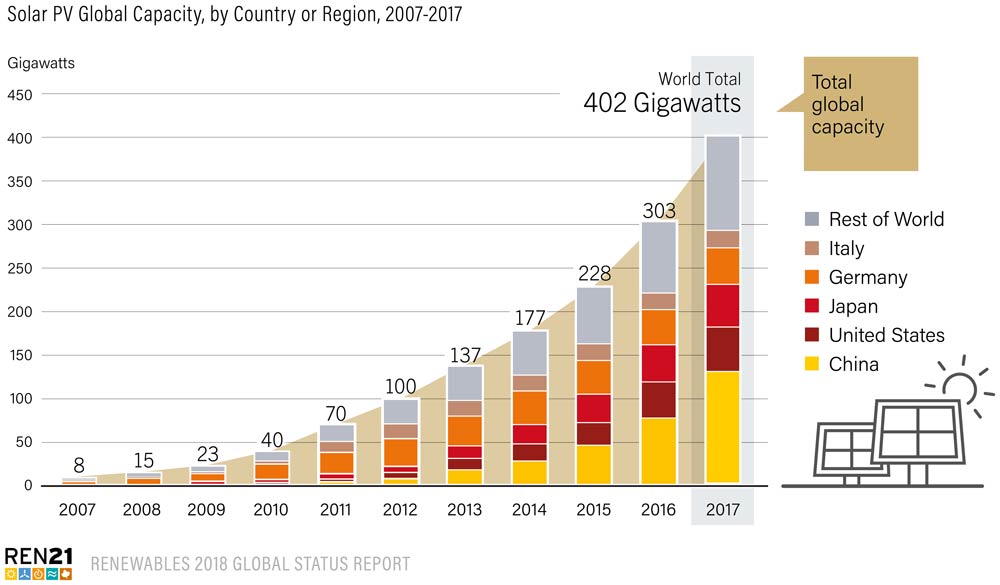
Investment in new renewable power capacity was more than twice that of net, new fossil fuel and nuclear power capacity combined, despite large, ongoing subsidies for fossil fuel generation. More than two-thirds of investments in power generation were in renewables in 2017, thanks to their increasing cost-competitiveness – and the share of renewables in the power sector is expected to only continue to rise.
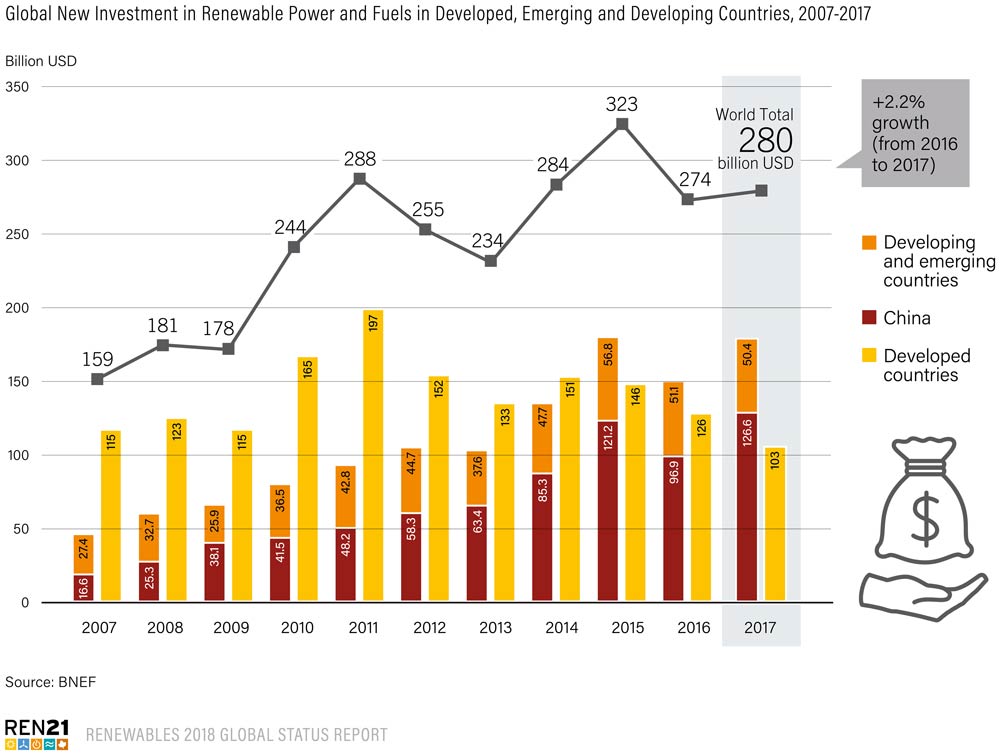
Investment in renewables was regionally concentrated: China, Europe and the United States accounted for nearly 75% of global investment in renewables in 2017. However, when measured per unit of gross domestic product (GDP), the Marshall Islands, Rwanda, the Solomon Islands, Guinea-Bissau, and many other developing countries are investing as much as or more in renewables than developed and emerging economies.
Both energy demand and energy-related CO2 emissions rose substantially for the first time in four years. Energy-related CO2 emissions rose by 1.4%. Global energy demand increased an estimated 2.1% in 2017 due to economic growth in emerging economies as well as population growth. Renewable energy uptake is not keeping pace with this increasing energy demand and the continuous investment in fossil and nuclear capacity.
In the power sector, the transition to renewables is under way but is progressing more slowly than is possible or desirable. A commitment made under the 2015 Paris climate agreement to limit global temperature rise to “well below” 2 degrees Celsius above pre-industrial levels makes the nature of the challenge much clearer.
If the world is to achieve the target set in the Paris agreement, then heating, cooling and transport will need to follow the same path as the power sector – and fast. These sectors have seen:
Little change in renewables uptake in heating and cooling: Modern renewable energy supplied approximately 10% of total global heat production in 2015. National targets for renewable energy in heating and cooling exist in only 48 countries around the world, whereas 146 countries have targets for renewable energy in the power sector.
Small changes are under way. In India, for example, installations of solar thermal collectors rose approximately 25% in 2017 as compared to 2016. China aims to have 2% of the cooling loads of its buildings come from solar thermal energy by 2020.
In transport, increasing electrification is offering possibilities for renewable energy uptake despite the dominance of fossil fuels: More than 30 million two- and three-wheeled electric vehicles are being added to the world’s roads every year, and 1.2 million passenger electric cars were sold in 2017, up about 58% from 2016. Electricity provides 1.3% of transport energy needs, of which about one-quarter is renewable, and biofuels provide 2.9%. Overall, however, 92% of transport energy demand continues to be met by oil, and only 42 countries have national targets for the use of renewable energy in transport.
For these sectors to change, the right policy frameworks need to be put in place, driving innovation and the development of new renewable energy technologies in the sectors that are lagging.

“Equating ‘electricity’ with ‘energy’ is leading to complacency. We may be racing down the pathway towards a 100% renewable electricity future, but when it comes to heating, cooling and transport, we are coasting along as if we had all the time in the world. Sadly, we don’t.”

Rana Adib, Executive Secretary of REN21

“To make the energy transition happen there needs to be political leadership by governments – for example by ending subsidies for fossil fuels and nuclear, investing in the necessary infrastructure, and establishing hard targets and policy for heating, cooling and transport. Without this leadership, it will be difficult for the world to meet climate or sustainable development commitments.”

Arthouros Zervos, REN21 Chair






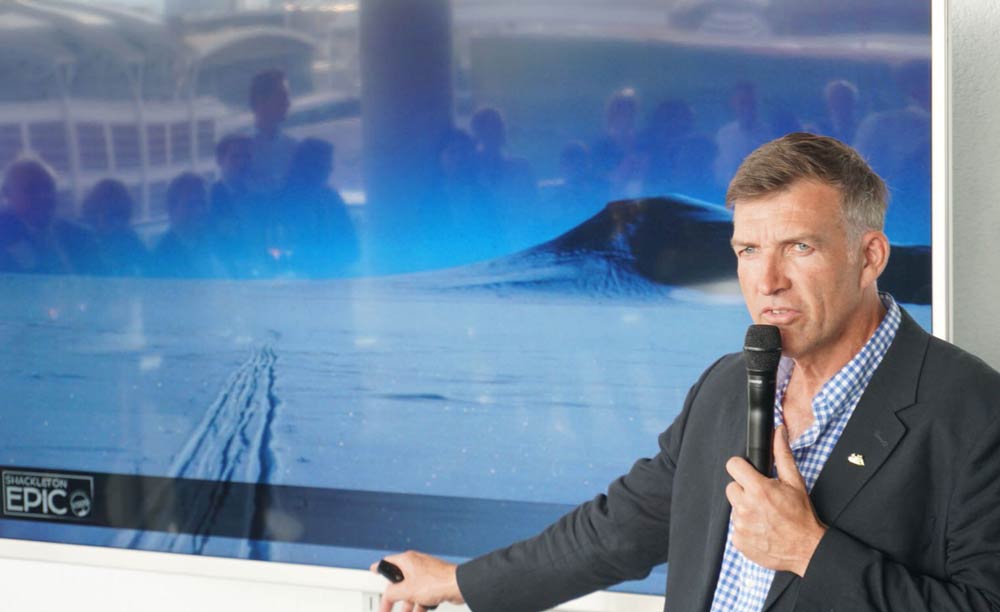


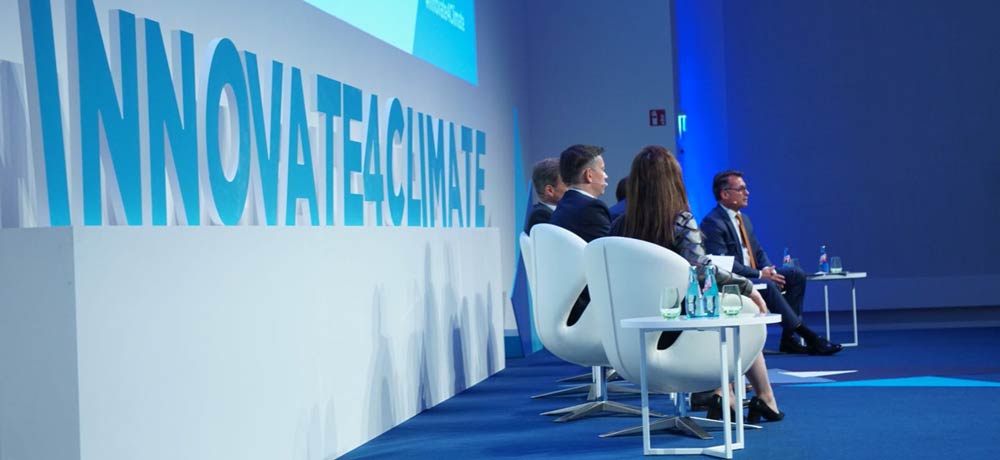
Governments at national and subnational levels around the world continue to prepare for, and implement, carbon pricing initiatives as a means to curb their emissions while raising revenues, a new World Bank report finds.
More Governments Taking Up Carbon Pricing and Seeing Big Benefits in Revenues: World Bank Report

Governments at national and subnational levels around the world continue to prepare for, and implement, carbon pricing initiatives as a means to curb their emissions while raising revenues, a new World Bank report finds.
Launched at the Innovate4Climate conference in Frankfurt, the annual State and Trends of Carbon Pricing 2018 report shows that carbon pricing continues to gain traction. This edition of the report also includes emerging trends as countries negotiate the guidelines of the Paris Agreement, in the run-up to the 24th Conference of the Parties (COP24) to the United Nations Framework Convention on Climate Change (UNFCCC).
To date, 70 jurisdictions (45 national and 25 sub-national) have implemented, or are scheduled to implement, carbon pricing initiatives. These mechanisms helped governments raise about $33 billion in 2017 in carbon pricing revenues from allowance auctions, direct payments to meet compliance obligations, and carbon tax receipts. This represents a 50% increase compared to the US$22 billion raised in 2016.
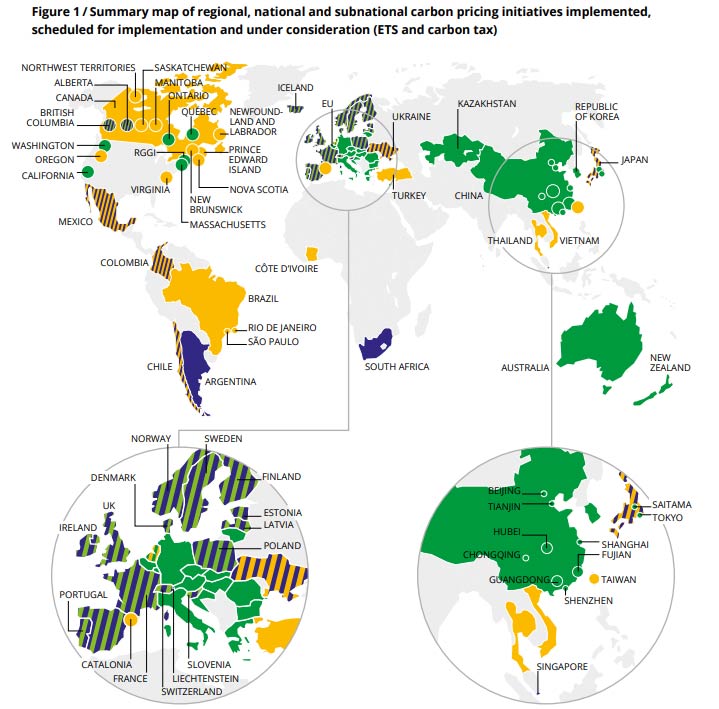
Implementation of carbon pricing initiatives has tripled in the past decade. In 2016 and 2017, this increase was primarily driven by jurisdictions in the Americas, including Chile, Colombia, the Canadian provinces of Alberta and Ontario, and the U.S. states of California, Massachusetts and Washington. But other regions are also active. In December 2017, China announced its plan to operationalize its national emissions trading system (ETS) in phases, starting with the power sector.
With a fully operational Chinese ETS, carbon pricing mechanisms around the world are projected to cover 11 gigatons of carbon dioxide equivalent (GtCO2e), or about 20 percent of global greenhouse gas emissions, up from 15 percent last year. The report also finds that carbon prices are rising, with about half of emissions now covered by carbon pricing initiatives priced at over US$10/tCO2e, compared to one-quarter of emissions covered in 2017.

“Governments at all levels are starting to see the effectiveness of carbon pricing in their efforts to cut harmful carbon pollution while also raising revenues for climate and other policies, including environmental action. As countries take stock of their Paris Agreement commitments and set a path towards increased ambition, carbon pricing mechanisms with robust pricing levels are proving to be essential elements of the toolkit.”

John Roome, World Bank Senior Director for Climate Change
The report also highlights emerging trends in carbon pricing, including the growing prominence of efforts in Asia and the Americas, the use of carbon pricing initiatives to serve multiple environmental and social objectives, and the adoption of phased approaches to make changes as initiatives progress. The report also notes the rise of innovative tools and technologies, as well as momentum to divest from fossil fuels - factors that have played a role in the advancement of carbon pricing initiatives.
The report is launched today at the Innovate4Climate (I4C) conference – the World Bank Group’s flagship annual event on climate finance, investment and markets which brings together global business, policy and finance leaders to discuss innovative climate finance solutions.
[video:https://vimeo.com/271002513]
The Forum’s closing day, with over 800 attendees present, did not disappoint. On a wide range of issues – energy access finance, bringing clean energy to refugee camps, clean cooking – government leaders, companies, NGOs, and financiers stepped up with new collaborations and commitments to achieve faster results.
Here is a recap of two intensive but productive days in Lisbon where all different players were committed to sustainable energy for all, leaving no one behind.

The Sixth Assembly of the Global Environment Facility (GEF), set up to help tackle our planet’s most pressing environmental problems, will take place from June 27-28, 2018 at the Furama International Conference Center in Da Nang, Viet Nam.
Innovate4Climate, launched in 2017 in Barcelona, is an integral part of this global dialogue of government, multilateral, business, banking, finance, technology leaders and society and embraces the global themes of climate finance, sustainable development, carbon pricing and markets.
Hosted by the World Bank Group and supported by Italy’s Ministry of the Environment and Energy Security and Germany’s Federal Ministry for Economic Cooperation and Development, Connect4Climate (C4C) is a global partnership for a livable planet that connects, creates, and communicates to build long-lasting change for future generations.